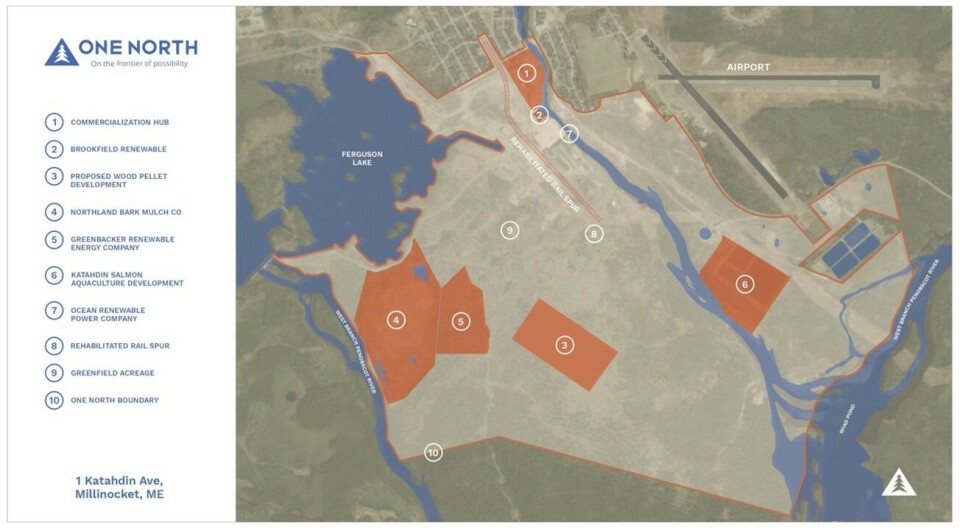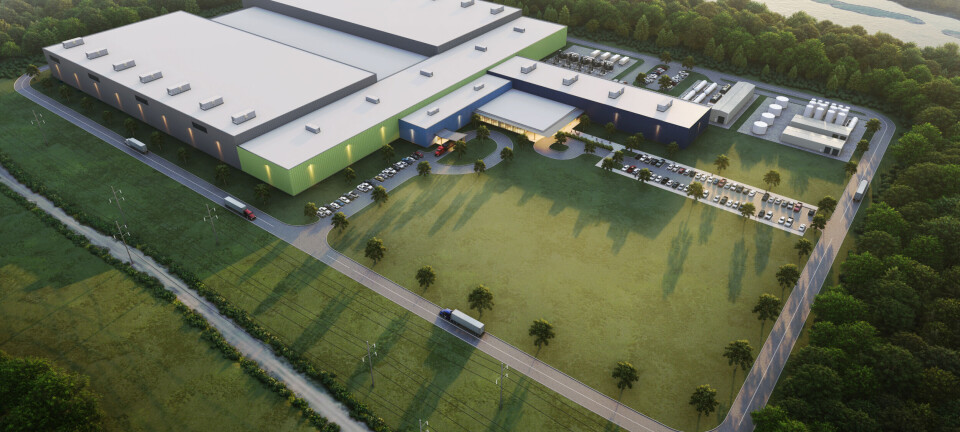
Nofitech chosen to build RAS system for US land-based salmon farm
Katahdin also changes name to Great Northern Salmon to reflect wider ambition
Katahdin Salmon, which plans a land-based fish farm in Maine in the northeast of the United States, has named Norwegian recirculating aquaculture systems (RAS) specialist Nofitech as its supplier.
The company has also announced that it has changed its name to Great Northern Salmon. Chief executive Marianne Naess said the new name reflects the developments of the company and the way forward but that still ties it to the local community of Millinocket in the north of Maine. The new brand will be scalable to future northern US locations beyond Millinocket.
Great Northern Salmon (GNS) said Nofitech had been chosen after a thorough review of options for RAS design vendors.
“It became clear as soon as we started exploring future collaboration that we see things the same way and that Nofitech has a design that is compatible with our bioplan,” said GNS head of RAS technology Dean Guest.
“Nofitech’s reputation for delivering on expectations for cost, performance, and schedule, proven through its repeat business with several customers, was also an important factor in the decision.”

Nofitech says that its combination of compact design and extensive use of standardised prefabricated units provides a lower total cost than similar facilities. The compact patented structure provides short pipelines, less footprint and is designed to prevent the accumulation of sediments.
“We would like to thank Great Northern Salmon for their trust and are proud to have been chosen as the RAS vendor for their project in Maine,” said Nofitech chief executive Robert Hundstad. “This marks the start of a long-term partnership with Great Northern Salmon, based on shared values, understanding, and objectives.”
$5m federal grant
GNS announced its new name and choice of RAS supplier after news that its development partner, Our Katahdin, had been awarded $5 million by the US Environmental Protection Agency (EPA) to remediate and prepare the project site for the salmon RAS facility, which is a former paper mill wastewater lagoon. Maine’s state government has already granted $1m towards the same project.
“This EPA-funded project will clear the way for Great Northern Salmon’s aquaculture project which has secured major project permits and is scheduled to begin construction in 2025,” said Sean DeWitt, president of Our Katahdin, a company formed to redevelop the 1,400-acre site that belonged to the Great Northern Paper Company which permanently closed in 2008.
When the Millinocket Mill opened in 1900, it was the world’s largest paper mill and the first to have an on-site hydro generation and distribution facility.
“We are grateful for the support of the EPA, our federal delegation, and the many local and state organisations that have supported the clean-up and infrastructure improvements to the former mill site. These investments are laying the foundation for significant job creation and a better economic future for the Katahdin region,” said DeWitt.

Less cost and time
GNS said federal and state contributions reduced its overall capital expenditure and will enable it to start construction with a fully prepared and excavated site, reducing the construction cost and shortening the timeline by six months.
Naess and her husband, Erik Heim, are former executives of Nordic Aquafarms, which has been trying for several years to build a 33,000-tonnes-per-year salmon RAS in Belfast, Maine, but has so far been blocked in court by opponents of the project.
After parting company with Nordic in 2022, Naess and Heim formed a holding company, Xcelerate Aqua, and in February last year announced the formation of Katahdin Salmon with the aim of building a 10,000-tonne salmon RAS in Millinocket.
At that time, Katahdin said the intention wasto produce 5,000 tonnes of Atlantic salmon in the first operational phase and another 5,000 tonnes in phase two. The project was expected to create 80 full-time local jobs at full production capacity.
The egg-to-harvest facility was planned to utilise 100% renewable hydro power, which Katahdin Salmon said would make it the greenest medium-scale RAS aquaculture operation in the US.
























































